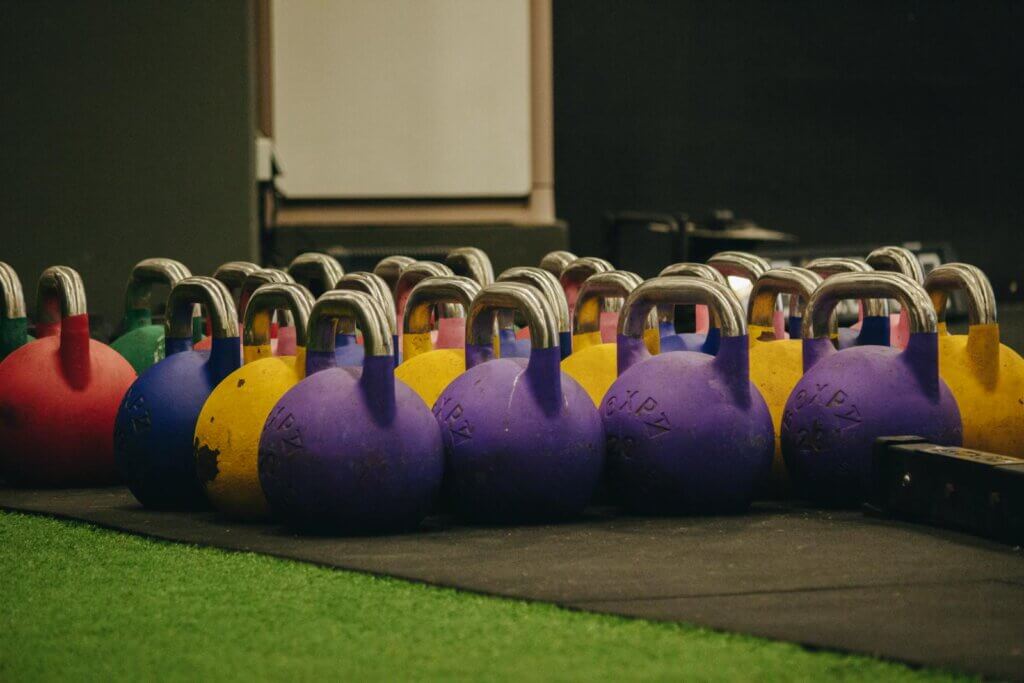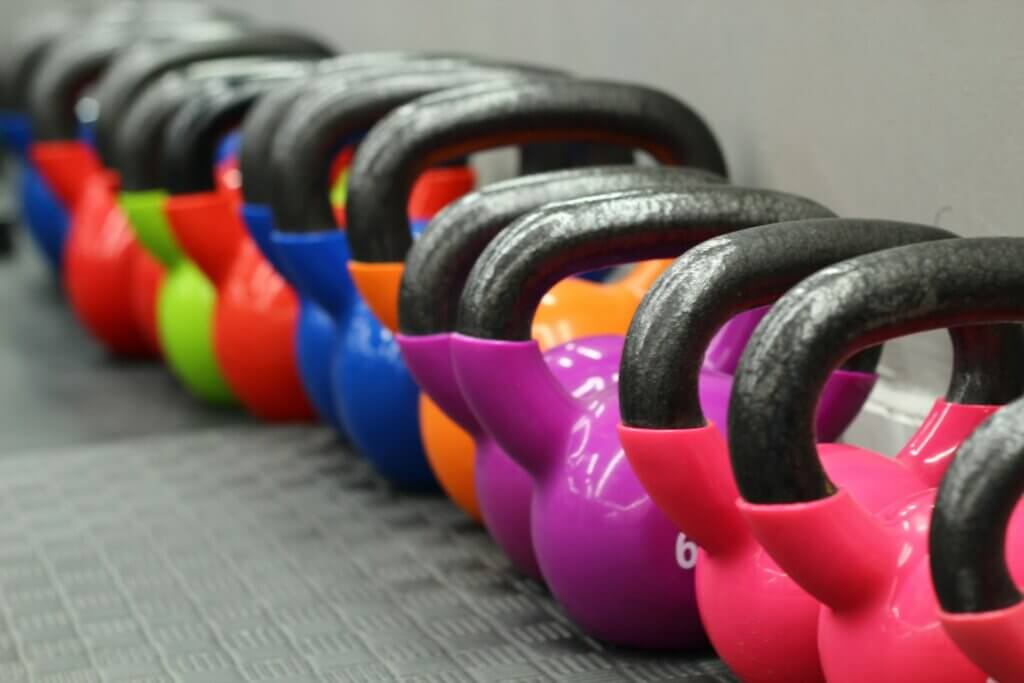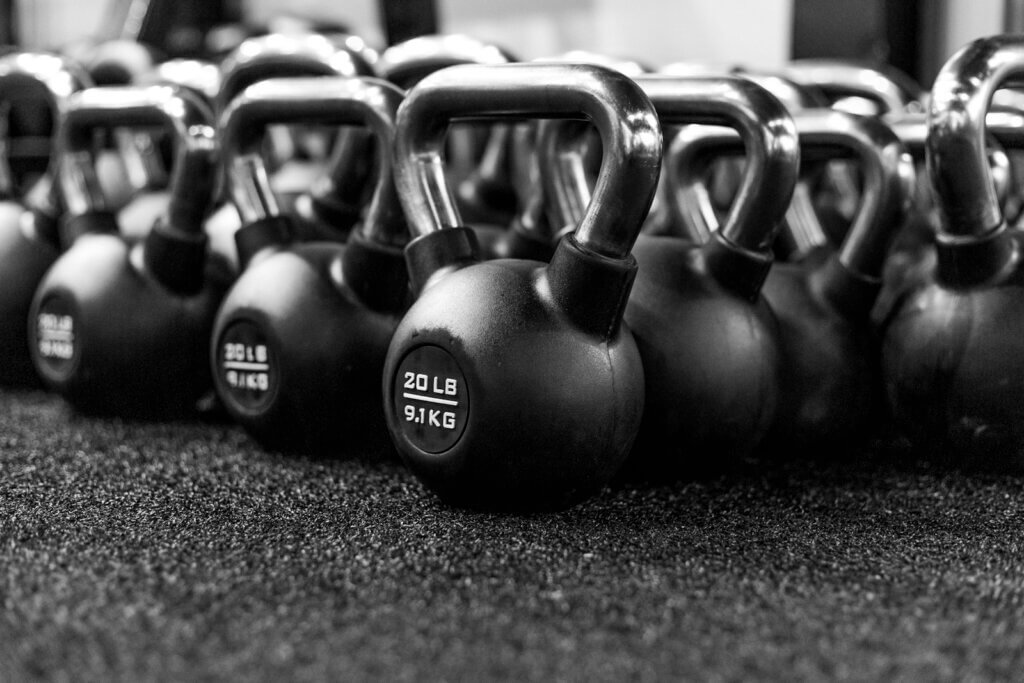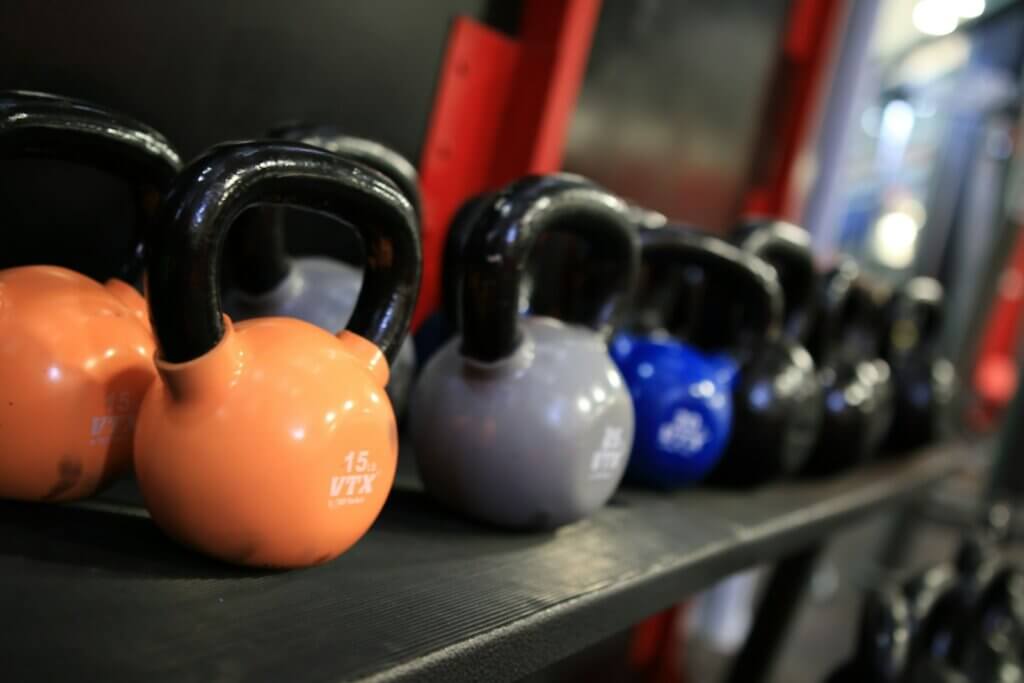Best Kettlebell Weights to Start With
Kettlebells are a fantastic addition to any home workout routine. These weights, which look like small cannonballs with handles, offer a versatile way to get a full-body workout. Originating from Russia, kettlebells have become very popular in fitness routines, especially in CrossFit. They can be used for a variety of exercises that work different muscles, improve cardiovascular health, and build overall strength. Exercises like swings, presses, and carries provide a dynamic workout that regular dumbbells and barbells can’t match.
For home workouts, kettlebells are particularly useful because they don’t take up much space. Unlike bulky gym machines or extensive weight sets, a few kettlebells can provide a comprehensive workout without cluttering your home. They are also cost-effective; you can get a great workout with just a few well-chosen kettlebells, which is much cheaper than buying lots of other equipment. Plus, with kettlebells, you can perform many different types of exercises, from strength training to cardio, all with one piece of equipment.
In this guide, we’ll focus on the best kettlebell weights to start with. We’ll cover what to consider before buying kettlebells, the different types available, and provide some beginner-friendly exercises to help you get started.
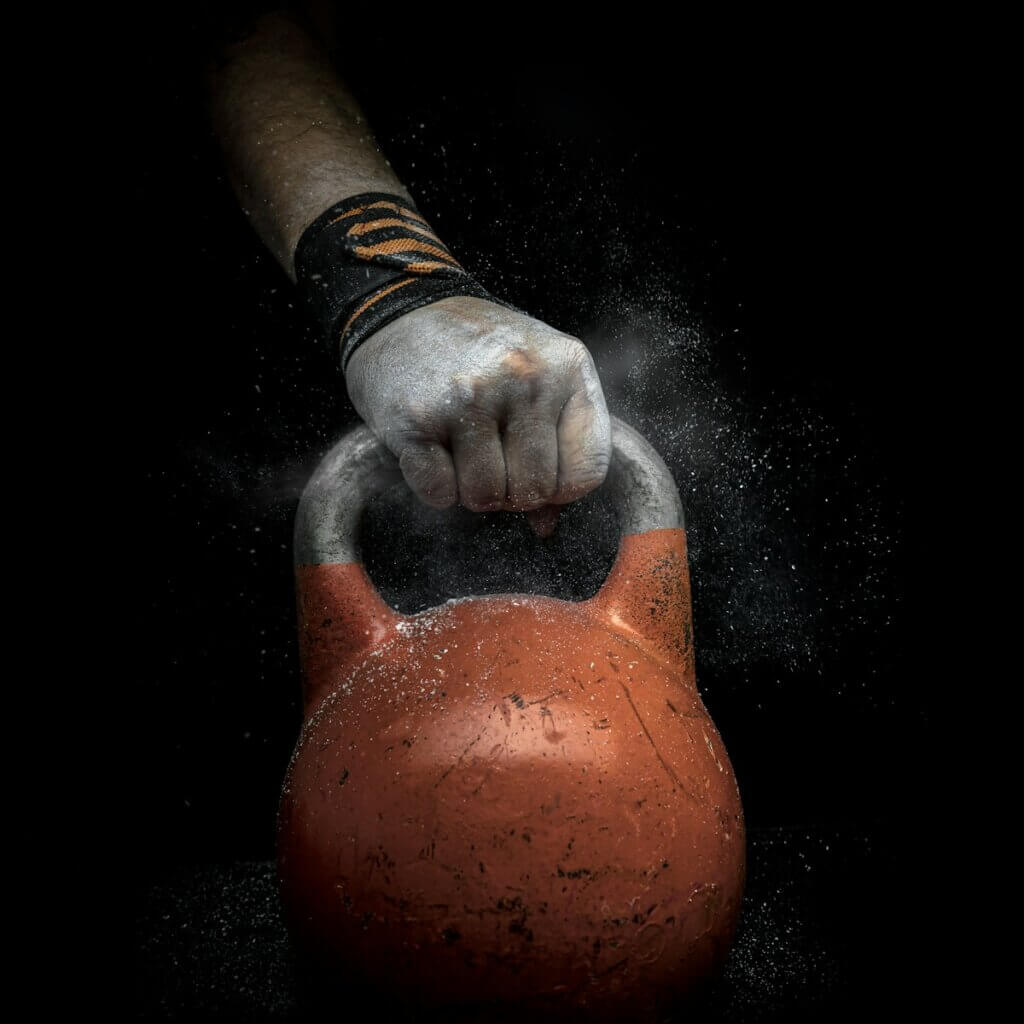
Kettlebell Weight Options
Choosing the right kettlebell weight is crucial, especially for beginners. Here’s how to decide on the best starting weights based on your fitness level and goals.
Common Kettlebell Weights
Kettlebells come in a variety of weights. Here are the most common ones:
- 8 kg (18 lbs)
- 12 kg (26 lbs)
- 16 kg (35 lbs)
- 20 kg (44 lbs)
- 24 kg (53 lbs)
- 28 kg (62 lbs)
- 32 kg (70 lbs)
Beginners
When you’re just starting, it’s important to choose weights that help you learn proper form without risking injury. Here’s a general guideline:
For Women:
- Start with a kettlebell weighing 8 kg (18 lbs) or 12 kg (26 lbs). This range is ideal for most women new to kettlebell training. The lighter weight allows you to focus on form and technique.
For Men:
- Start with a kettlebell weighing 12 kg (26 lbs) or 16 kg (35 lbs). These weights are typically suitable for men new to kettlebell exercises, providing a good balance between challenge and control.
Intermediate and Advanced
As you gain strength and confidence, you can move on to heavier weights. But for now, let’s focus on the beginner weights and exercises that will help you get there.

Shop Kettlebells now on Amazon
See Amazons extensive range of Kettlebells here. (Affiliate Link)
Benefits of Starting with Lighter Weights
Starting with lighter weights has several advantages:
- Learning Proper Form: It’s crucial to master the correct technique before moving on to heavier weights. Poor form can lead to injuries and less effective workouts.
- Building Confidence: Starting with a manageable weight helps build confidence. As you get stronger and more comfortable with the movements, you can gradually increase the weight.
- Preventing Injuries: Using a lighter weight reduces the risk of injury, which is especially important for beginners who are still learning how to move correctly.
Tips for Buying Kettlebells
Start Small: If you’re unsure where to begin, start with a lighter weight. You can always buy heavier kettlebells as you progress.
Quality Matters: Invest in good quality kettlebells. Cheaper options might save money initially, but they often don’t last as long and may not be as safe.
Mix and Match: Consider buying a few different weights to cover various exercises and progression levels. This keeps your workouts versatile and allows you to challenge yourself as you improve.
Beginner Kettlebell Exercises
Here are some beginner-friendly kettlebell exercises that are perfect for getting started:
- Kettlebell Swing: Works your glutes, hamstrings, and core. Great for cardio.
- Goblet Squat: Targets your quads, glutes, and core.
- Turkish Get-Up: Improves full-body strength and stability.
- Kettlebell Press: Builds shoulder and upper body strength.
- Kettlebell Deadlift: Strengthens your hamstrings, glutes, and lower back.
- Kettlebell Snatch: A full-body exercise that requires explosive power.
- Kettlebell Clean and Press: Combines a clean and an overhead press, working multiple muscle groups.
Check out our complete list of exercises here!
Kettlebell Workout Examples
Beginner Workouts:
Workout 1: Basic Circuit
- Kettlebell Swings: 3 sets of 10 reps
- Goblet Squats: 3 sets of 10 reps
- Kettlebell Deadlifts: 3 sets of 10 reps
- Rest: 1 minute between sets
Workout 2: Full-Body Beginner
- Turkish Get-Up: 3 sets of 5 reps per side
- Kettlebell Press: 3 sets of 10 reps
- Kettlebell Rows: 3 sets of 10 reps per side
- Rest: 1 minute between sets
Starting with the right kettlebell weights and practicing these beginner exercises will help you build a solid foundation. As you become more comfortable and stronger, you can gradually increase the weight and intensity of your workouts. Remember, consistency is key, so keep at it and enjoy the process of getting fitter and stronger with kettlebells!

Shop Kettlebells now on Amazon
See Amazons extensive range of Kettlebells here. (Affiliate Link)
Benefits of Kettlebells
Kettlebells are great because they can help you get a full-body workout. Here are some of the key benefits:
Versatility: You can use kettlebells for many different exercises like swings, squats, presses, and get-ups. This means you can work out different parts of your body with just one piece of equipment.
Functional Strength: Kettlebell exercises often mimic real-life movements, which helps you build strength for everyday activities and reduces the chance of injury.
Cardio Fitness: Many kettlebell workouts involve fast, continuous movements that get your heart pumping and help improve your cardiovascular health.
Core Stability and Balance: Using kettlebells often requires you to engage your core muscles, which helps improve your balance and stability.
Time-Efficient: Kettlebell workouts can be done quickly but still provide a great workout, perfect for those with busy schedules.
Improved Grip Strength: The thick handle of a kettlebell helps strengthen your grip, which is useful for other exercises and everyday tasks.
Portability: Kettlebells are easy to move around, so you can work out at home, in the park, or even take them with you when you travel.
What to Consider Before Buying Kettlebells
Before you buy kettlebells, think about these factors to make sure you choose the right ones:
Weight Range: Think about the weights you need based on your fitness level and the exercises you want to do. It’s good to have a range of weights to progress over time.
Material and Build Quality: Kettlebells come in different materials like cast iron, steel, and vinyl-coated. Choose one that is durable and will last through many workouts.
Handle Comfort and Grip: The handle’s thickness and texture are important. Make sure the handle is comfortable and provides a good grip, even when you’re sweating.
Space: Consider the space in your home. Kettlebells don’t take up much room, but if you have several, you’ll need to store them.
Budget: Kettlebells vary in price. Decide how much you want to spend and find kettlebells that give you the best value without sacrificing quality.
Brand Reputation: Look for brands known for making good quality kettlebells and read reviews to see what other users think.
Types of Kettlebells Available
Kettlebells come in different materials and designs. Here are the most common types:
Cast Iron Kettlebells:
- Pros: Durable, available in many weights, thicker handle for better grip strength.
- Cons: Can be rough on hands, paint may chip.
Steel Kettlebells:
- Pros: Same size no matter the weight, often used in competitions, durable and smooth finish.
- Cons: More expensive, thinner handles might not suit everyone.
Vinyl-Coated Kettlebells:
- Pros: Protects floors, reduces noise, colorful for easy weight identification.
- Cons: Coating can wear off, bulkier.
Adjustable Kettlebells:
- Pros: Saves space, cost-effective.
- Cons: May rattle, less durable.
Grip and Handles
The handle of a kettlebell is important for comfort and safety. Here’s what to look for:
Handle Thickness:
- Thicker Handles: Good for grip strength but may be hard for those with small hands.
- Thinner Handles: Easier to grip, especially for beginners or those with small hands.
Handle Texture:
- Smooth: Comfortable, less likely to cause blisters but can get slippery.
- Textured: Better grip but can be rough on hands.
Handle Width:
- Make sure the handle is wide enough to hold with both hands for exercises like swings.

Shop Kettlebells now on Amazon
See Amazons extensive range of Kettlebells here. (Affiliate Link)
Choosing the right kettlebells and incorporating them into your workouts can greatly improve your strength, endurance, and overall fitness. Whether you’re just starting or looking to enhance your routine, kettlebells are a versatile and effective option for your home workouts.

Shop Kettlebells now on Amazon
See Amazons extensive range of Kettlebells here. (Affiliate Link)

